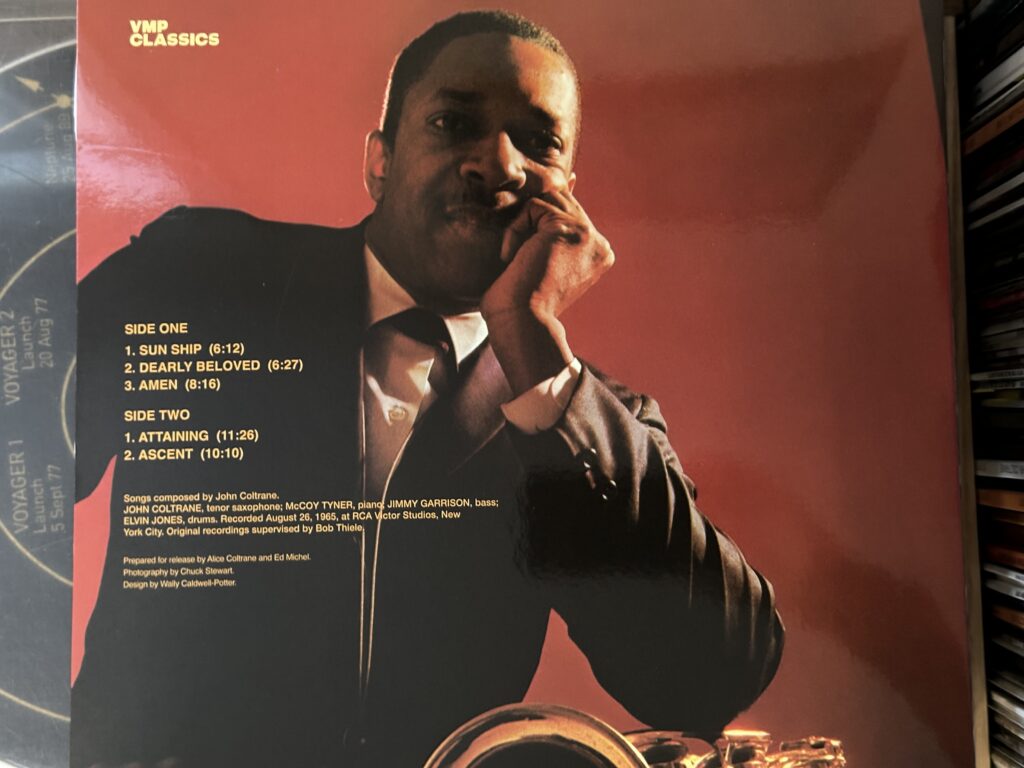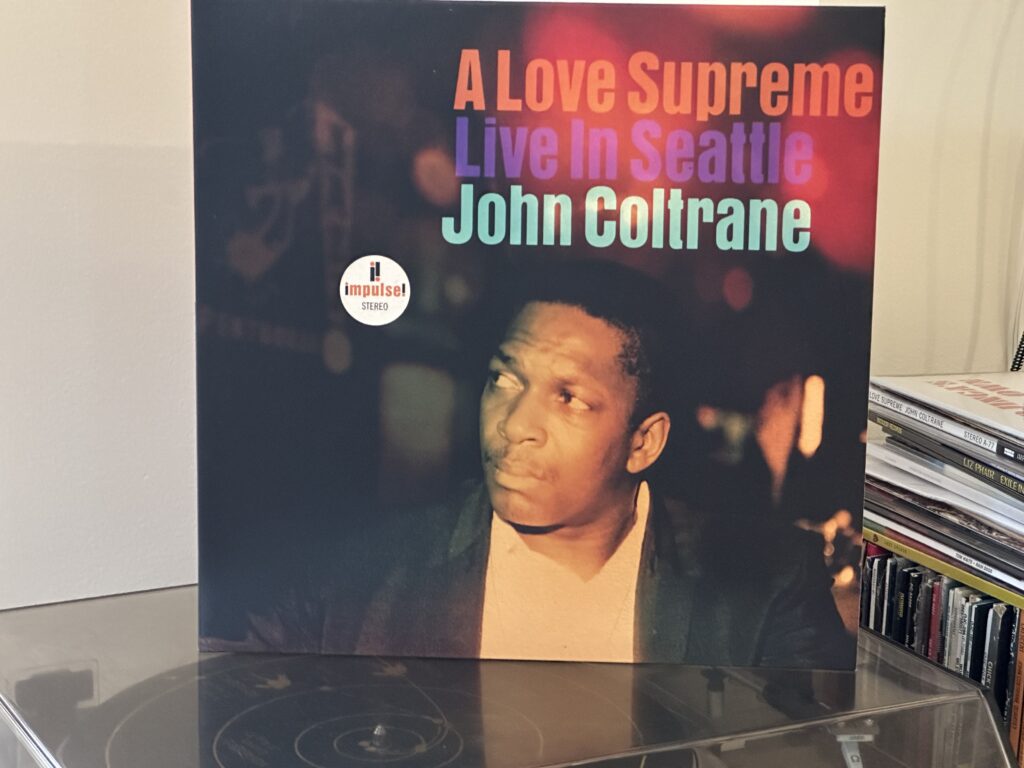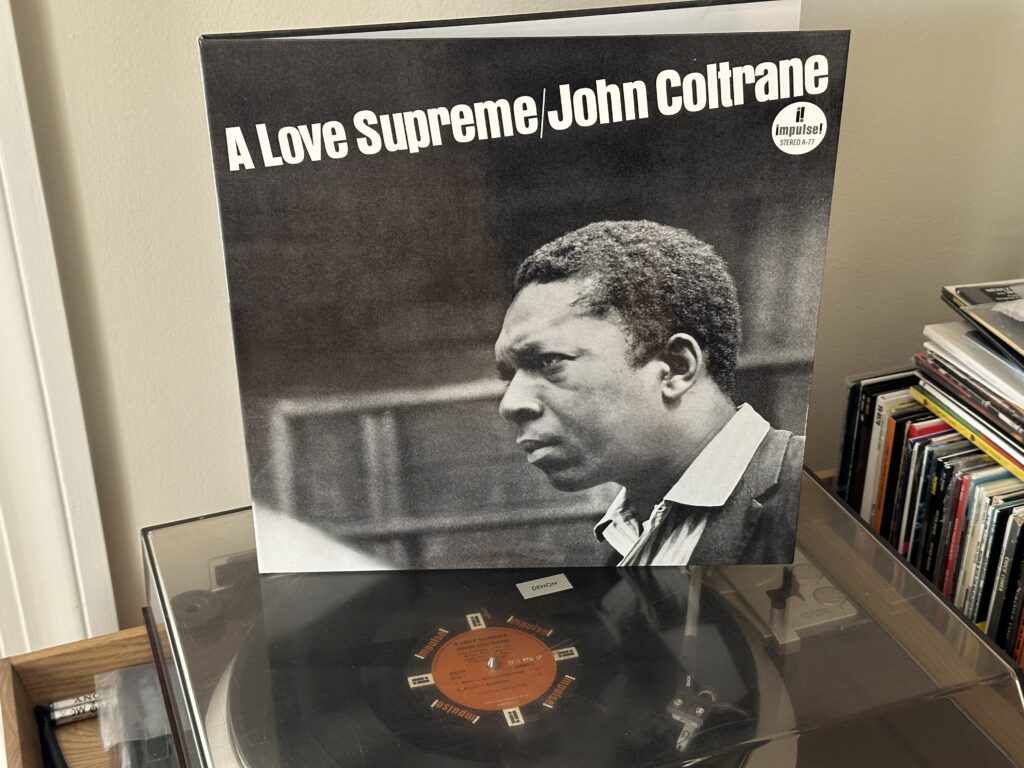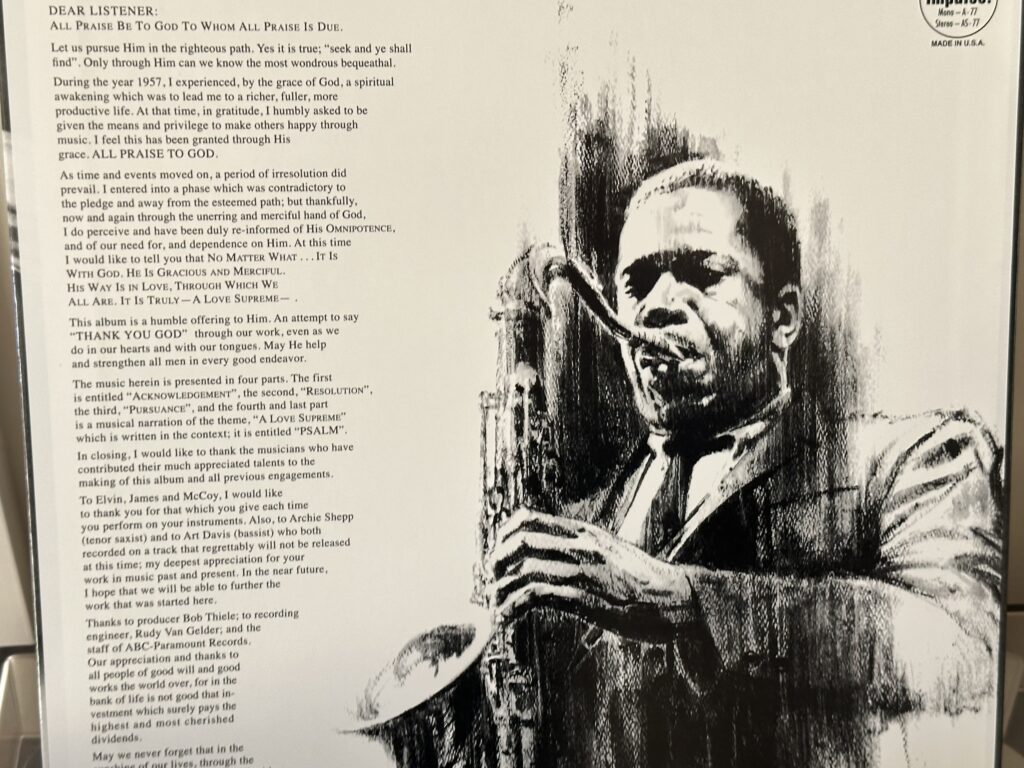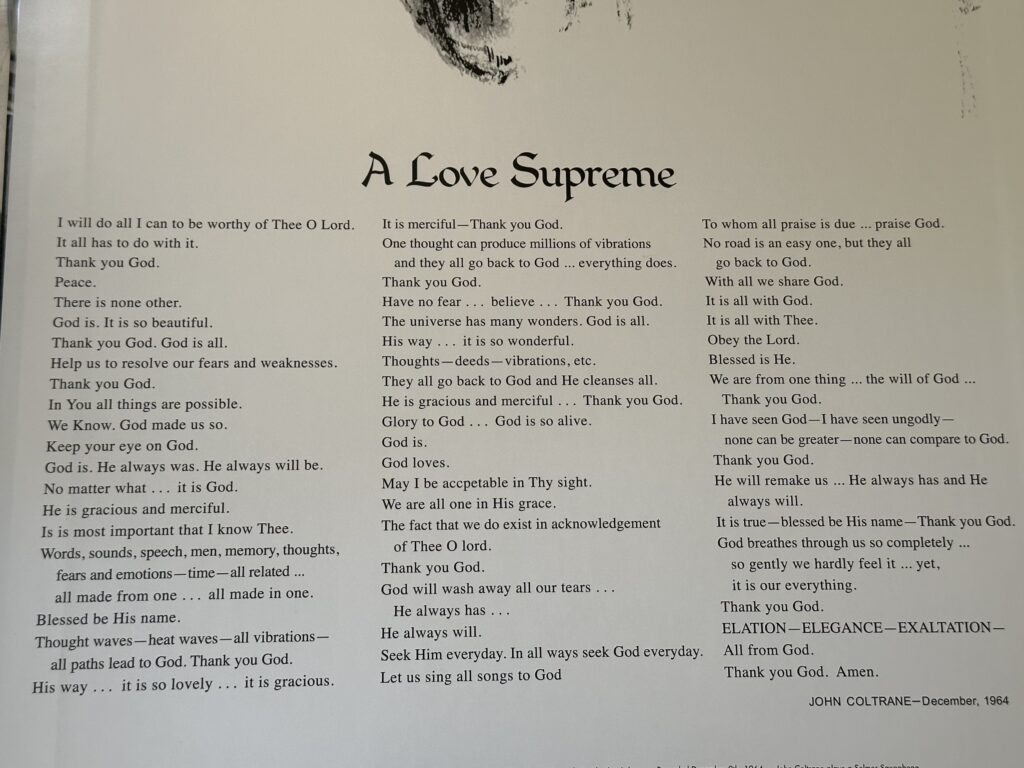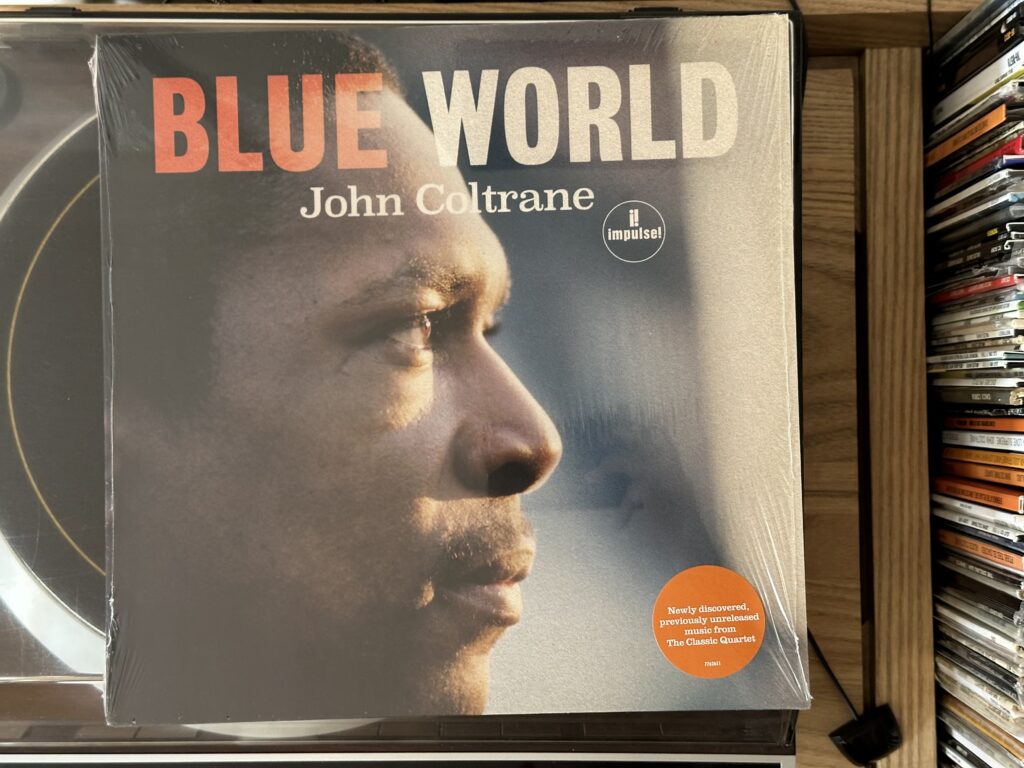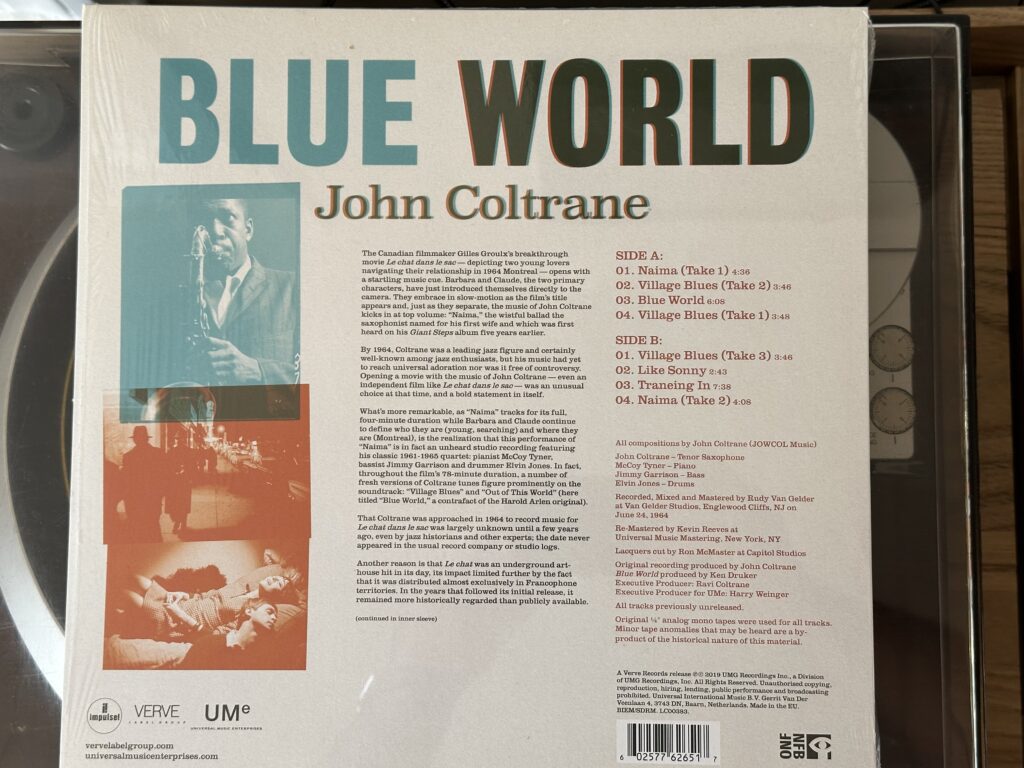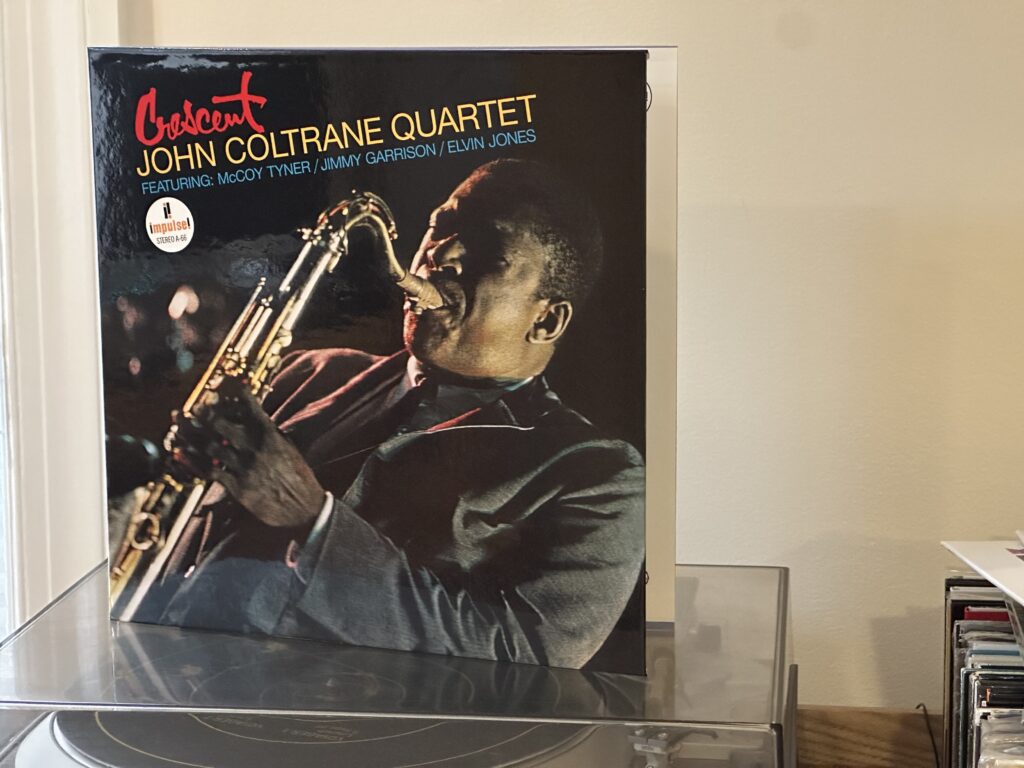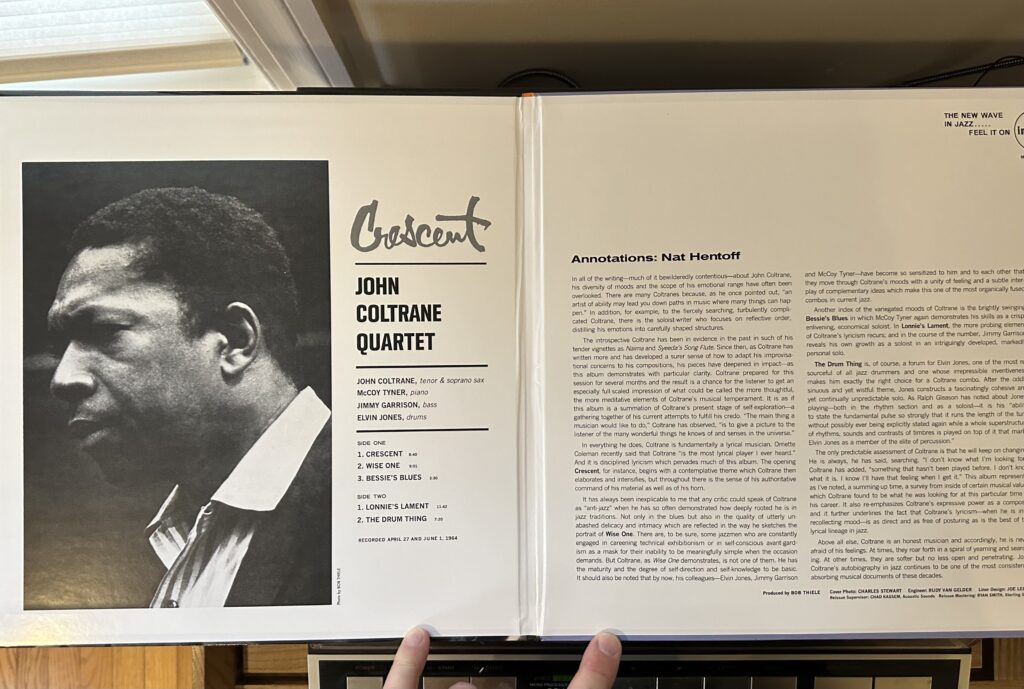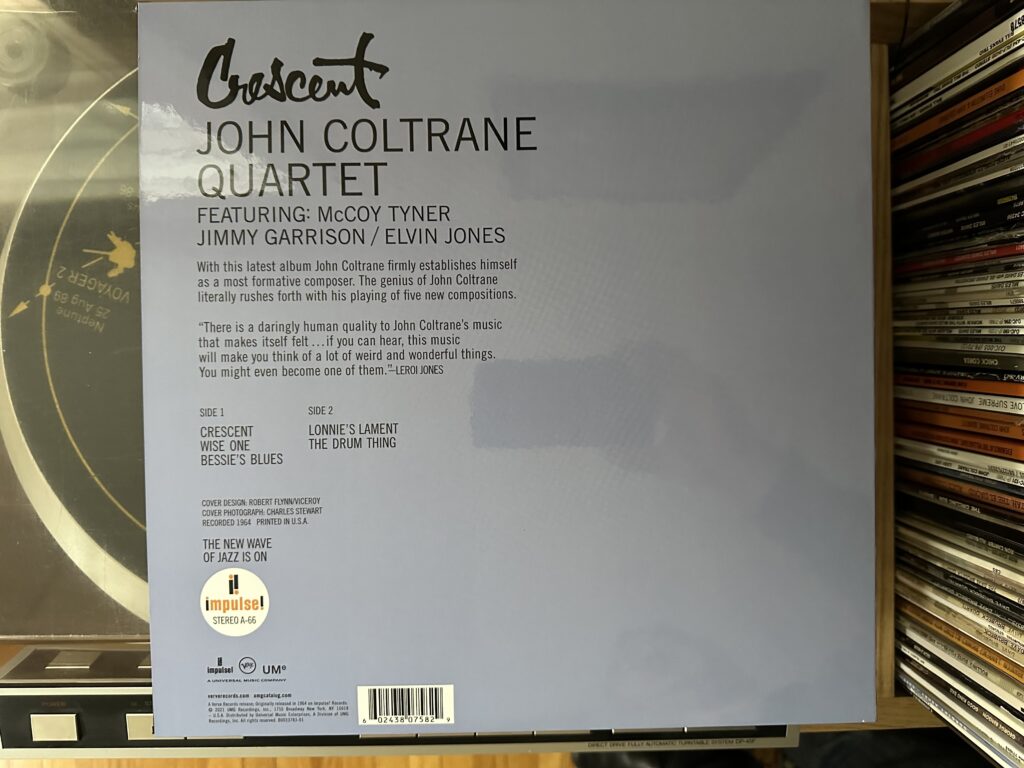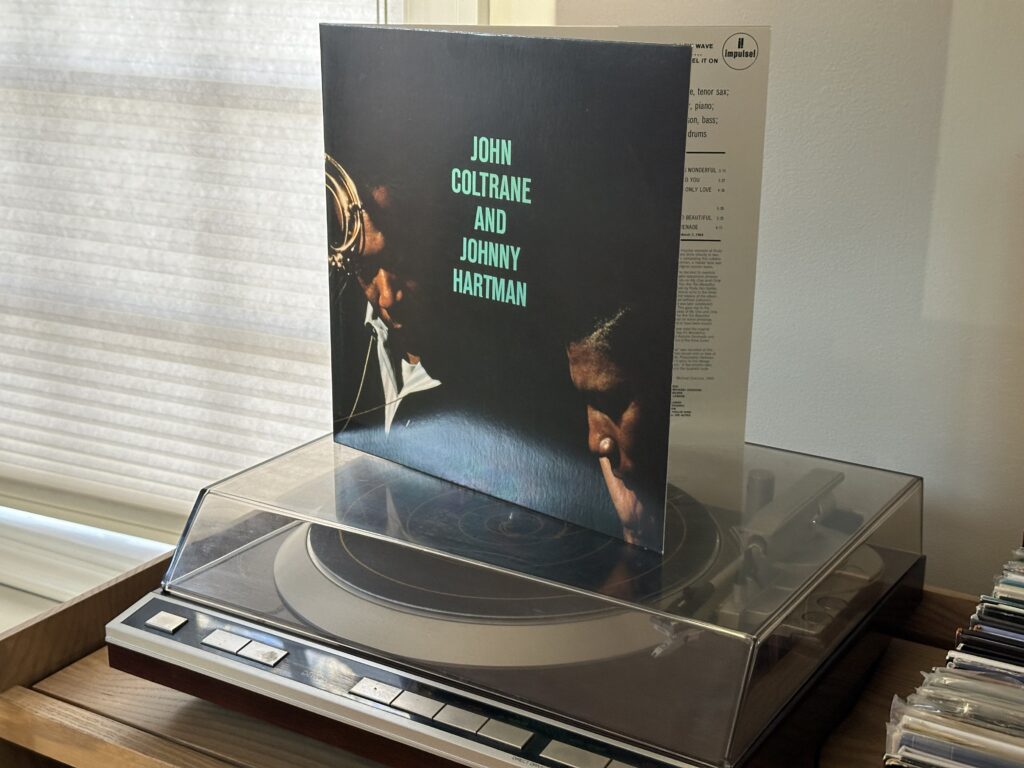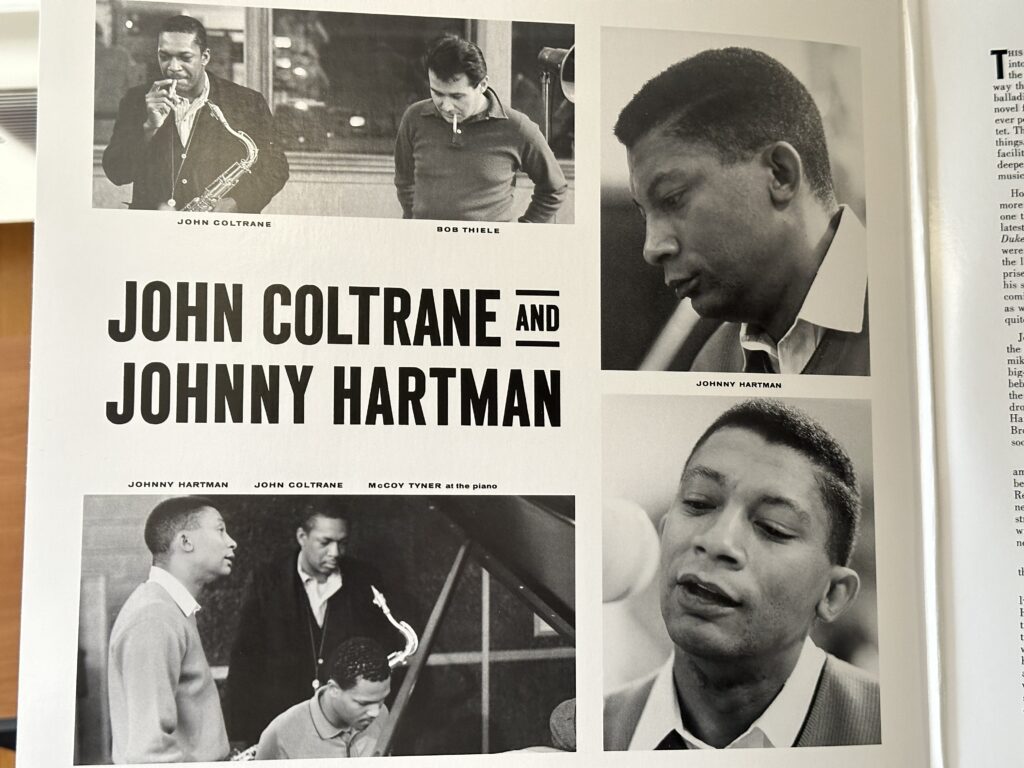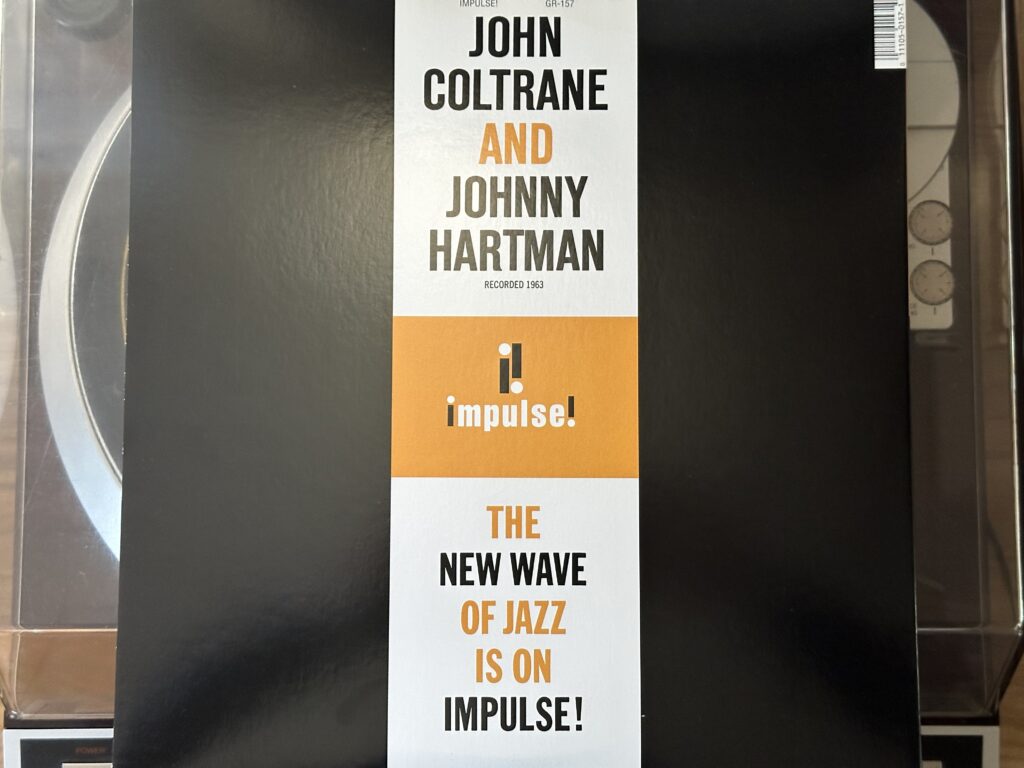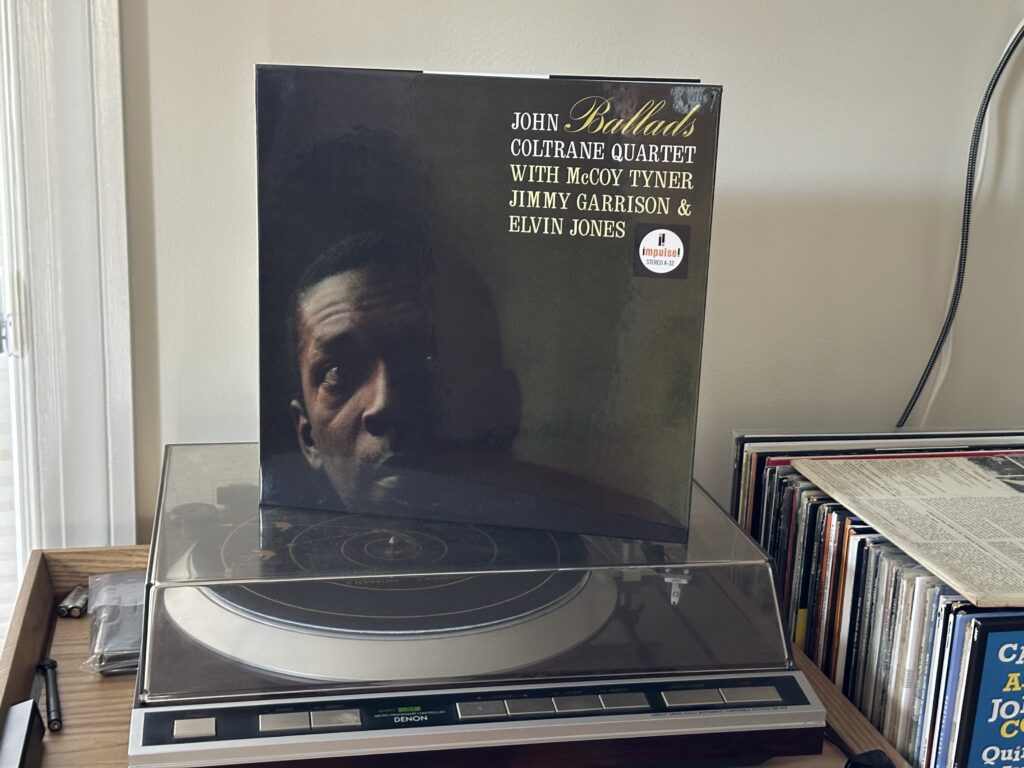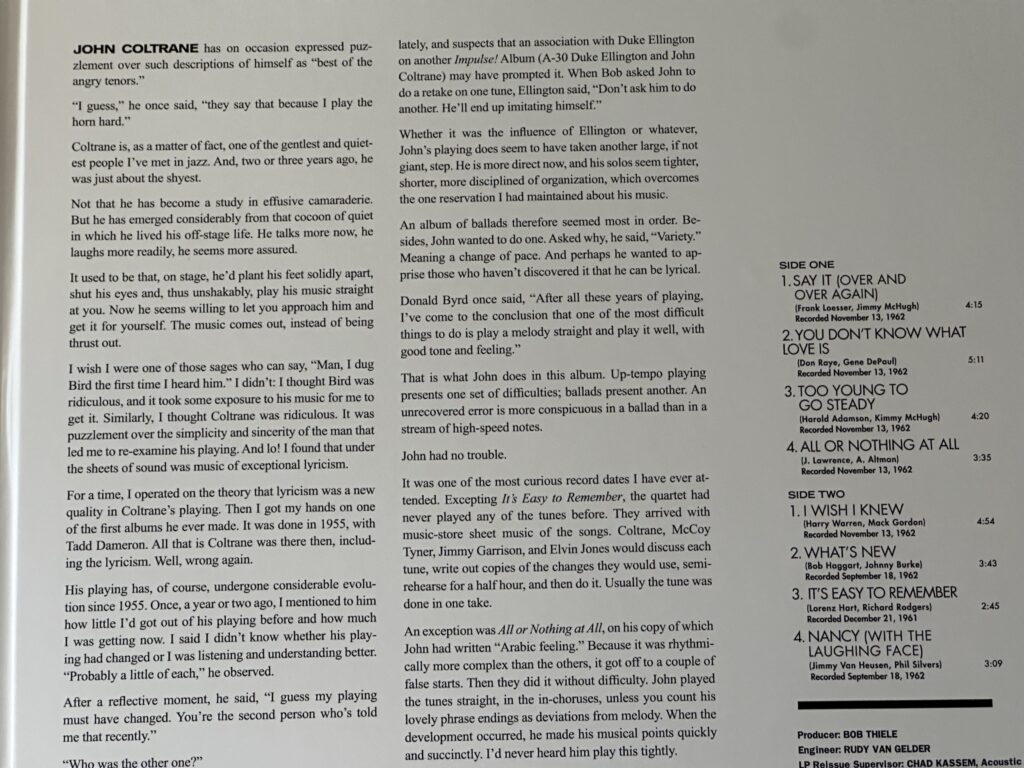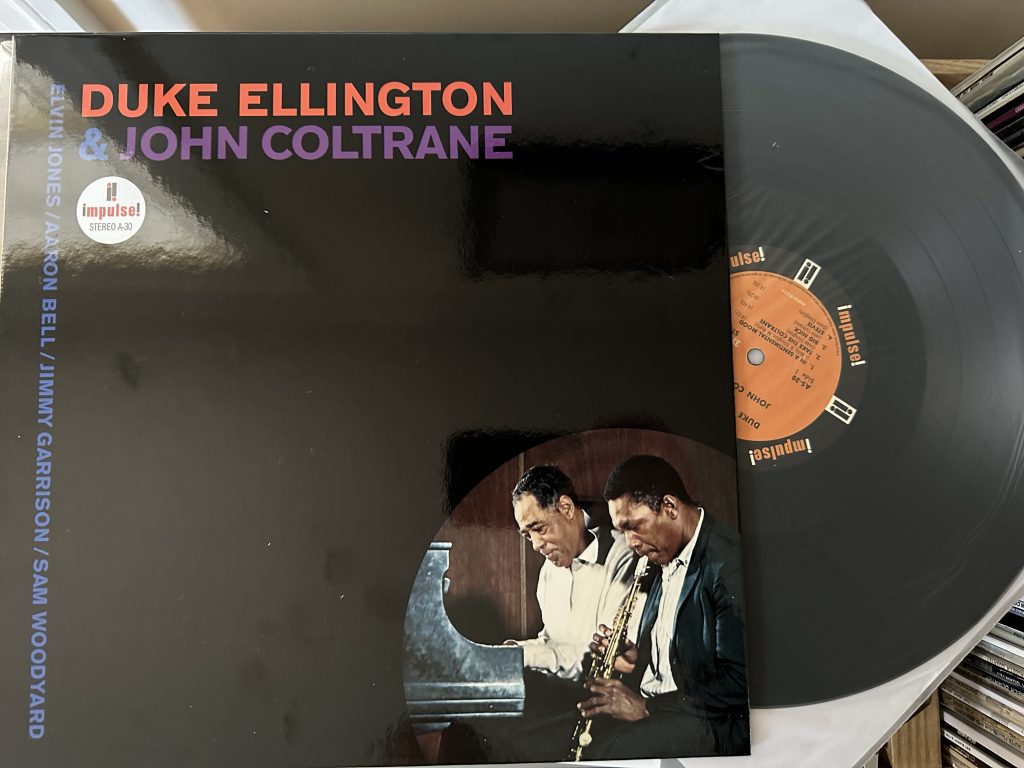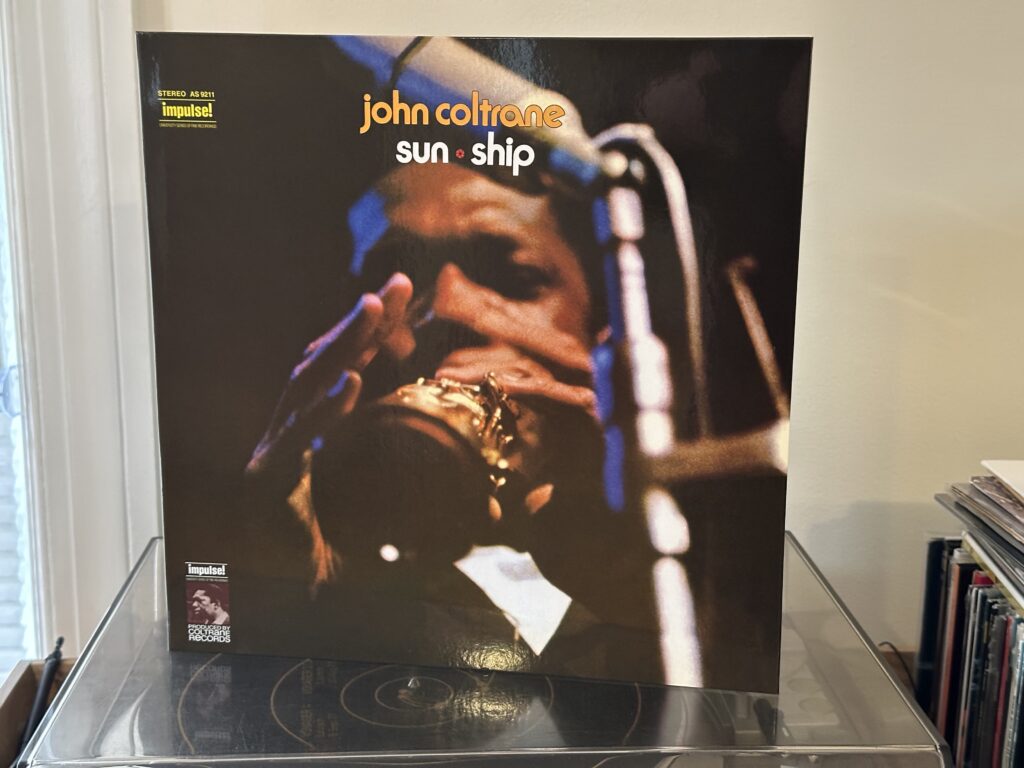
Album of the Week, April 6, 2024
Like all great things, the classic John Coltrane Quartet was not to last. Trane’s restless searching, which we’ve seen in Evenings at the Village Gate and A Love Supreme: Live in Seattle, was constantly seeking new sounds and new instrumentation. This started with more drums and bass, and extended to bringing in additional horns, either individual saxophonists like Archie Shepp and Pharoah Sanders (heard on Meditations, recorded November 23, 1965), or whole horn sections as heard in Ascension (recorded June 28, 1965).
But the classic quartet continued to be a performing and recording unit throughout this pivotal year; indeed, Trane hardly stopped recording, not even letting obstacles like the unavailability of Rudy Van Gelder’s studio slow him down. As a result, many of the sessions recorded during this period were not released until years after his death, including Transition and Living Space (recorded in June 1965) and today’s record Sun Ship, recorded at the RCA Victor Studios on August 26, 1965.
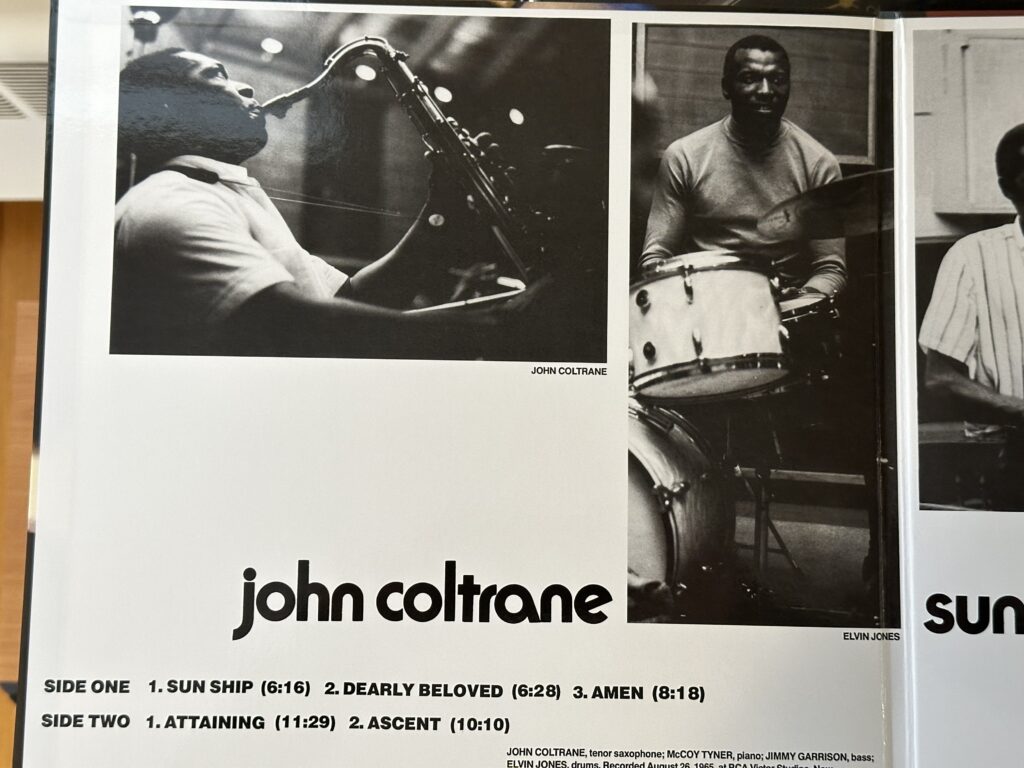
“Sun Ship” begins with a blast, Trane blowing rapid four-note patterns while the rhythm section follows his staccato lead, then four bars of apocalyptic drums from Elvin Jones, a repetition of all of the above, and then an extended solo from McCoy Tyner. Tyner here is far from the mannered player of Reaching Fourth or Nights of Ballads and Blues; while rooted in chords, he nimbly shifts the focus of his solo from racing arpeggios to bomb-dropping block chords to blistering rhythmic patterns that recall Trane’s opening salvo, all egged on by Jones’ massive drum presence. Jimmy Garrison holds on throughout it all, providing running commentary and suspended fifths. When Trane reenters, he is in full prophetic mode, the tone of his saxophone fraying and smearing as he plays extended runs that blow right past the metrical bounds of the composition. He finds honking, bleating tones at both the high and low end of his range and keeps pushing the limits of his instrument’s sound right up until the track stops abruptly just past the six-minute mark.
“Dearly Beloved” starts with a rare snippet of studio chatter from Trane to his band: “then you can go into it later… well, I think it would better to keep pressing, so we will keep a thing happenin’ all through it, but you can go through it when you feel like it. Ready?” At which point Trane introduces a broad, dramatic minor-key melody that would have been at home between the “Resolution” and “Psalm” movements of A Love Supreme. Jones and Garrison provide a heartbeat beneath Trane’s melody. Tyner, meanwhile, sketches the chord progressions with alternating block chords and ornaments, at points barely audible beneath Trane’s onslaught. When Trane subsides, we hear what Tyner has been doing: he has his own melody against a brook-like obbligato that captures a serene pause before racing back through Trane’s chords, to return once more to the C♯ tonality from the beginning. The track is full of movement but returns again and again to this serene center. “Amen” follows a similar structure, though the melody and chords bear a family resemblance to “Resolution.” At one point Tyner’s crashing chords roll forward into a triple meter, a sort of frenzied waltz, before falling back to Trane. Coltrane’s closing solo seems to take the form of a wailing prayer before tapering off to a quieter conclusion; the crashing wave of Elvin Jones’ drums brings the track to a conclusion.
Side two opens with the quiet melodic statement of “Attaining,” played freely over the quartet’s oceanic explorations with a statement reminiscent of “Lonnie’s Lament” from Crescent. After the introduction, though, the quartet drops into a lower key, with Trane speaking the words of an unknown poem through his horn over a relentless triplet rhythm in Elvin Jones’ drums. (A listen to the complete Sun Ship recordings, released a few years ago, shows that the key change is actually the result of a splice of two different takes!) When the group coalesces into a forward beat, it’s driven forward by a prominent pizzicato part from Garrison over bursts on the cymbals and snare from Jones, while Tyner takes an extended solo. The brilliant bit of the track, though, is the way that Tyner and Jones collectively slow the heartbeat through their use of polyrhythms without appreciably slowing the actual tempo of the underlying pulse. There’s one more statement of the psalm followed by another roaring wave from Jones before the quartet changes key down once more, with psalm in saxophone over a bowed line in the bass. The whole thing is breathtaking.
And then Jimmy Garrison begins “Ascent” with a simple six-note ascending chromatic figure, alternating with patterns of descending thirds, then the chromatic figure played in parallel on adjoining strings a fourth apart. Garrison continues with his solo exploring different melodic patterns around the chords implied by the chromatic scale. After about five minutes—halfway through the track—Jones joins with a bouncing figure on the cymbals and snare, and he and Garrison slow to a halt. Then Trane joins with a version of the chromatic theme played in the original lower key, and Tyner splashes blocks of chords underneath everything. Together, they take the quietly spoken prayer and make it a group cry, before Garrison repeats the theme one last time.
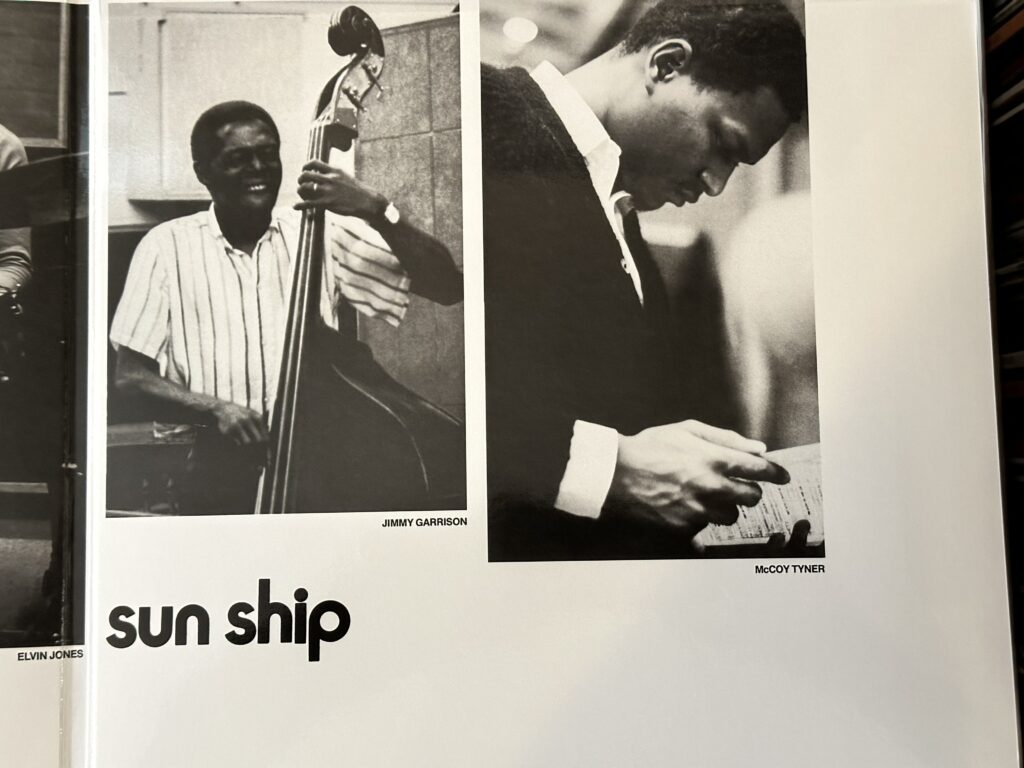
“Ascent” serves as a fitting send-off for the quartet in its original form. Tyner, Jones and Garrison were clearly the only group on the planet that could keep up with his energy, but the writing was already on the wall that their time together was limited. In early 1966, Elvin Jones left, feeling that his polyrhythmic style was clashing with the more omnidirectional approach of Rashied Ali, who had joined as a second drummer. McCoy Tyner had already left in December 1965, saying something similar about Ali and the other percussionists who joined: “I didn’t see myself making any contribution to that music… All I could hear was a lot of noise. I didn’t have any feeling for the music, and when I don’t have feelings, I don’t play.”
Trane continued to add more avant-garde players to his sound in the last years of his life. We’re going to hear from some of them, but next week we’ll listen to one of the members of the Classic Quartet in his rejuvenated career as a leader.
You can listen to this week’s album here:
